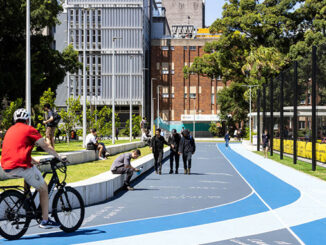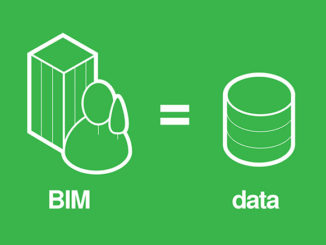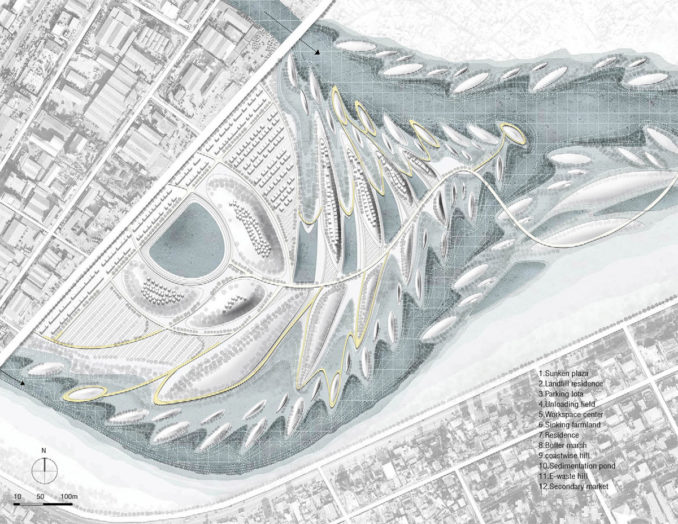
The site is located in KORLE LAGOON, Accra, Ghana. It used to be a mangrove lagoon, carrying the main ecological function of the Accra urban ecosystem. However, due to the dumping of e-waste from all over the world, today only less than 10% of mangroves survive. Simultaneously, because of electronic garbage and household waste clogging the lagoon, seasonal torrential rains cannot be discharged, and e-waste polluting water seriously threatens the health of residents.
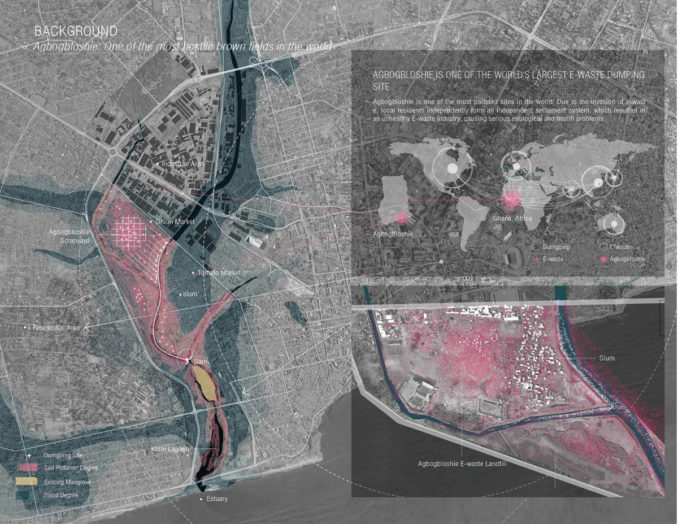
The design focuses on three elements: e-waste, mangroves, and floods. Two spaces are created to balance these three elements stated above: the E-waste hill (+) and the Eco-habitat (-). The layout and rules of two spaces are based on the structural lines derived from contamination degree, the individual and structural lines are combined to arrive at a planar layout.
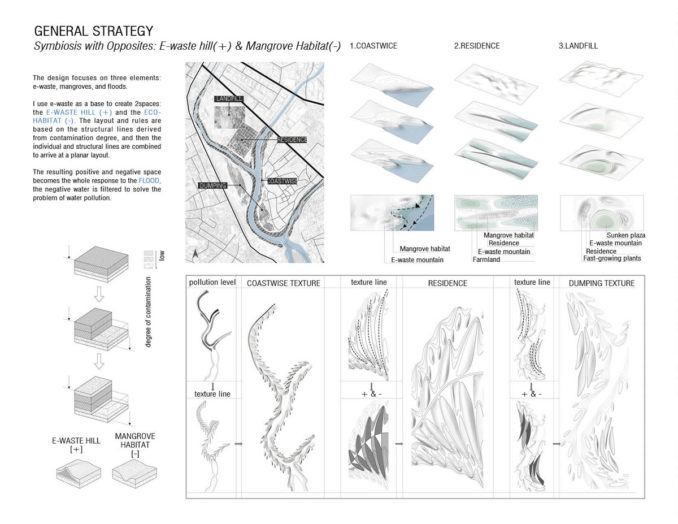
Therefore, two strategies and a flood simulation system were established to balance e-waste, mangroves, and seasonal floods.
In the first strategy, E-waste hill is the positive space in a pair of opposites, the source of all evil, which can also serve as the base to turn sin into life starting. Through earthwork balance and e-waste accumulation, the originally distributed waste is concentrated in specific areas, and high-tech anti-seepage technology is used for pollution isolation. Additionally, methane gas from the sealed hill will be used to generate electricity in the city.
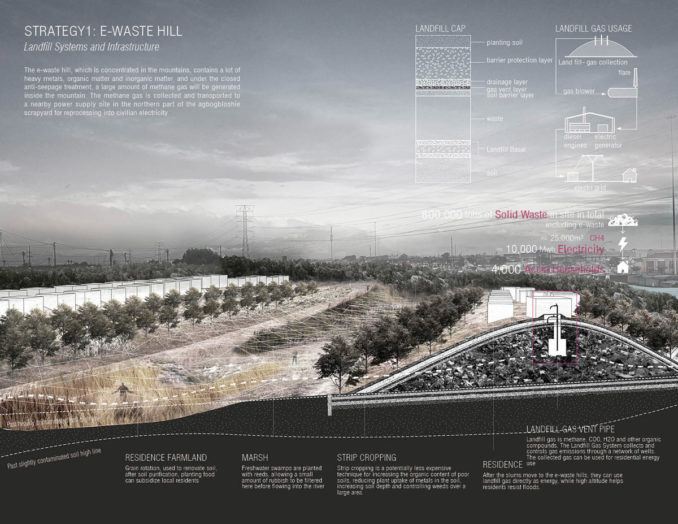
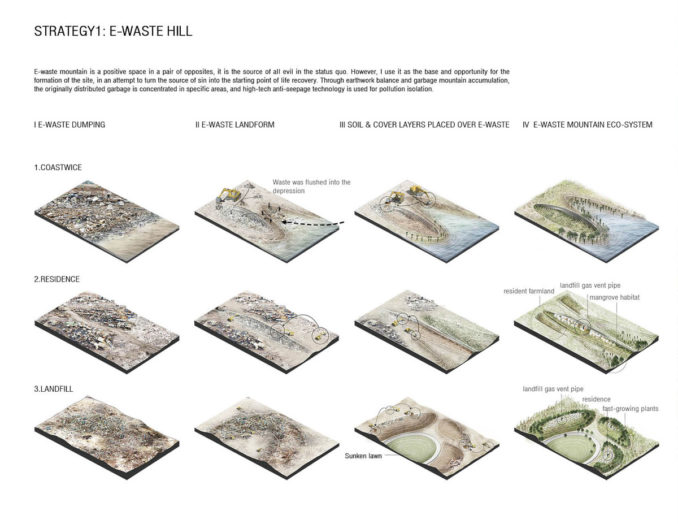
In the second strategy, Eco-habitat is the negative space, also the nursery for mangrove recovery. This strategy starts from four steps, solving the visible waste in the lagoon, gradually recovering the water quality, planting mangroves in reef ball, and aiming to recover the lagoon ecosystem.
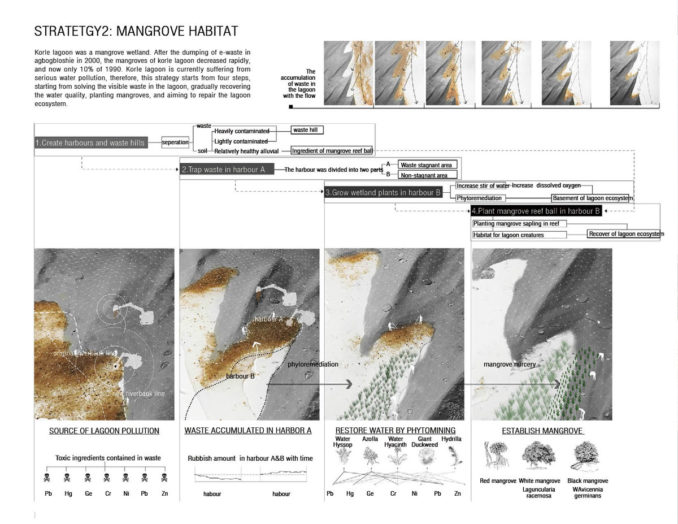
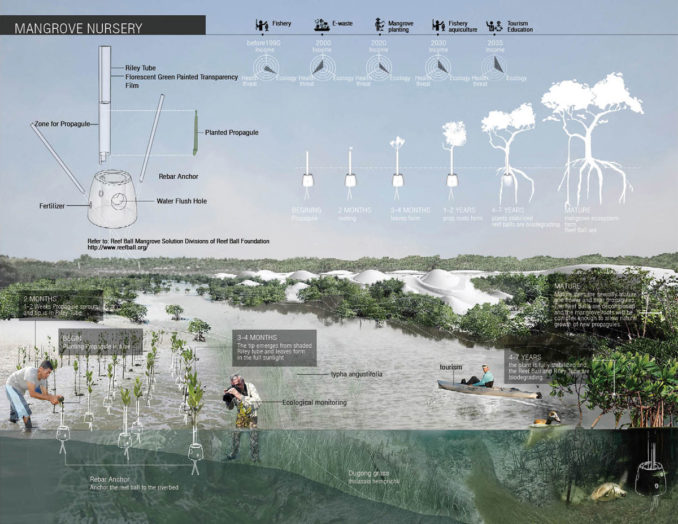
The resulting positive and negative space becomes the whole response to the flood. Blocked and guided by e-waste mountains, water flows into the eco-habitats, filtering through layers before flowing into the lagoon, in which process, negative space, the eco-habitats have become a place for saving seasonal rain, using rainwater for dry sea son demand, and finally achieving a balance between e-waste, mangroves, and floods.
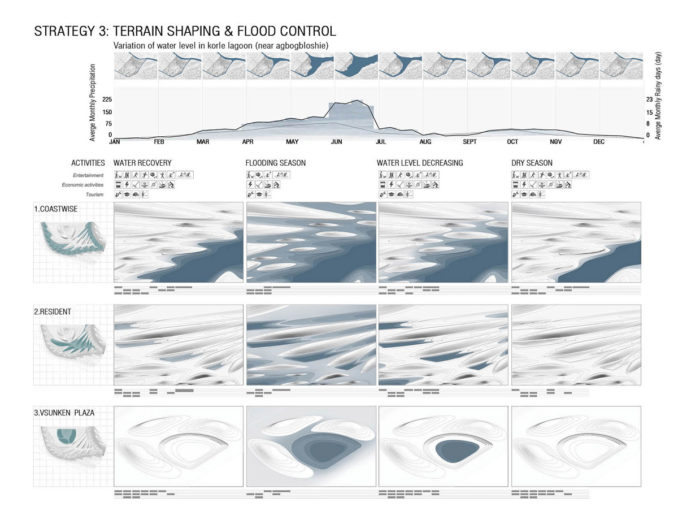
Symbiosis with opposite
Location: Korle Lagoon, Accra, Ghana
Student | Minzhi Lin
Advisor: Anhua Liang
University: Huaqiao University
Image and Text credits: Minzhi Lin


